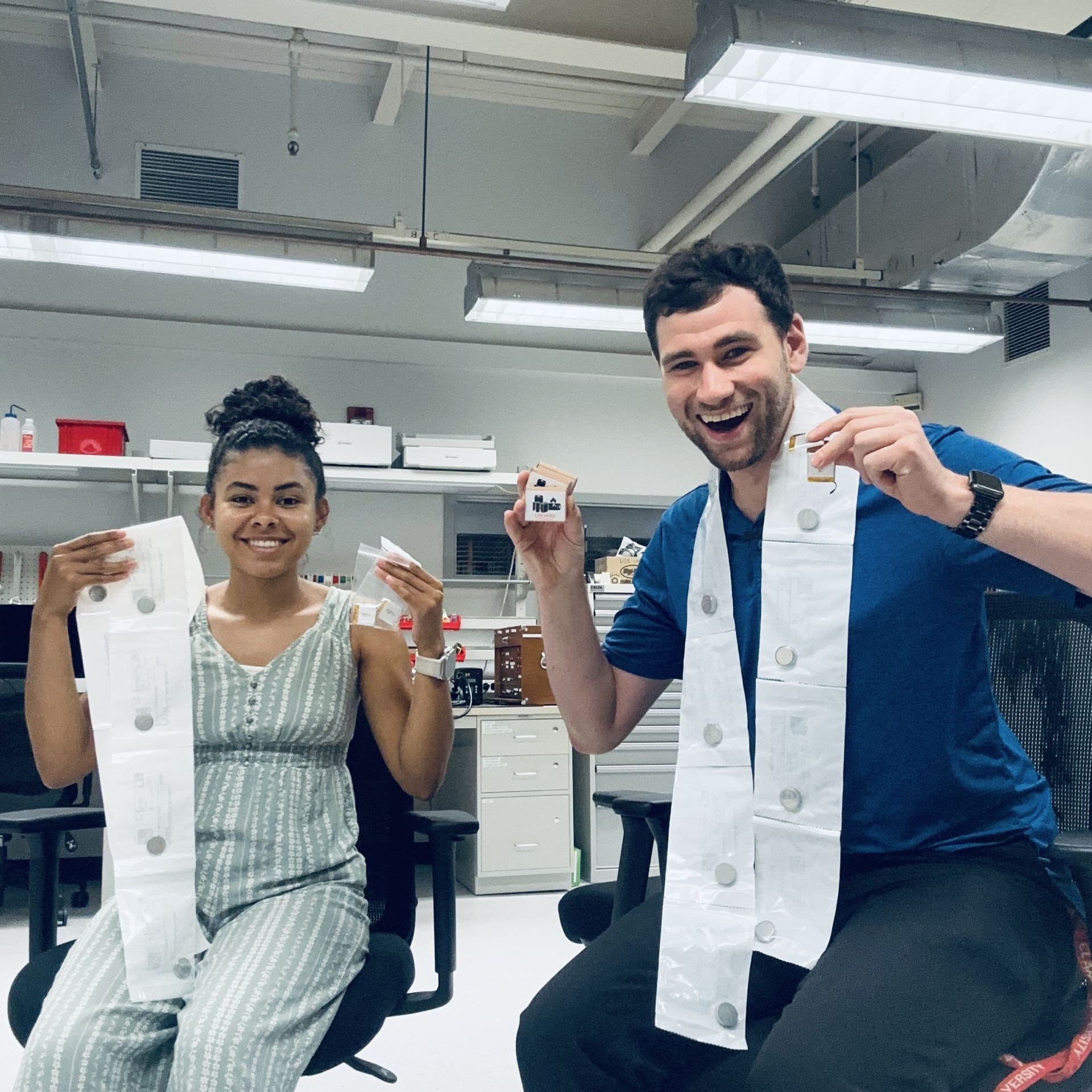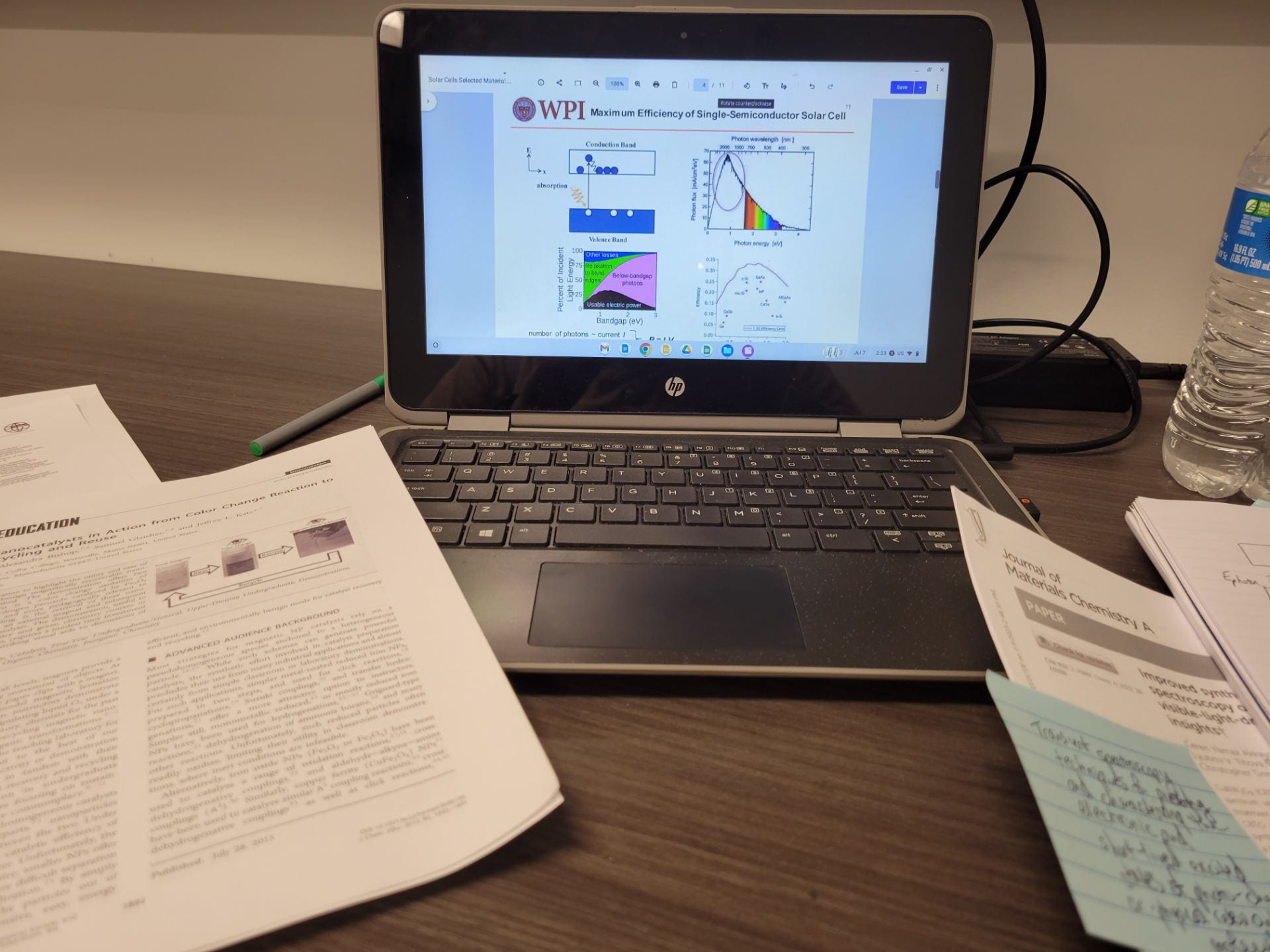About Me:
I am a third-year undergraduate student at Worcester Polytechnic Institute. Currently, I am pursuing a degree in Electrical and Computer Engineering while also participating in WPI’s Teacher Preparation Program. I also plan to gain licensure in 11th-grade physics.

About the Lab:
My lab is in Atwater Kent Laboratories which is where the Electrical and Computer Engineering department is located. For this project, I am mainly working in the Integrated Circuits and Systems Lab upstairs in room 315. This lab’s main research focus includes Smart Health Applications, Implantables and Wearables, Sensor Interfaces, Neural Interfaces, RF-Energy Harvesting, Wireless Power and Data Transfer, Power Management IC, Biomedical Security, and Low Power Analog/Mixed Signal IC Design.
Project:
The Integrated Circuits and Systems Lab has been focusing on smart health applications and wearables. Our project involves working on the development of a miniaturized non-invasive blood gas monitor. Blood oxygen is a vital piece of information for healthcare providers. The goal is to create a device that is printed on a flexible PCB (printed circuit board) and can be simply placed on the skin without the supervision of a medical provider.
Respiratory failure is very unpredictable, yet its signs are very important to healthcare providers. A lack of proper oxygen monitoring leads to more drastic cases of illnesses resulting in more use of hospital resources including staff and equipment. The main objective of this project is to create a device that provides staff with this accurate vital sign that a patient can wear at home.
The creation of this device aligns with the third goal of the United Nations Sustainable Development Goals which aims to ensure healthy lives and promote well-being for all at all ages. The precise measurements from this device allow patients to get treatment faster, therefore, decreasing the stress on hospital staff. In addition to this, its smart design can be used by all, even in places where it may be difficult to conduct more invasive testing. All these factors contribute to the good health and well-being of the global population.
Weekly Updates:
- Week 1: Week one was mostly spent familiarizing myself with the project. This included reading research papers and filling up any other gaps in my knowledge. In addition to this, we also got to begin searching for new batteries for the device.
- Week 2: Our team was able to move forward during week two. We got to discuss our list of batteries with the lab and make a choice about which ones we will order. To get comfortable with the lab equipment, a test circuit was created. This required patience and a little bit of creativity given that we had to create a model with non-ideal components. Overall, we were able to get a general understanding of how battery discharging works.
- Week 3: Many troubleshooting sessions were held during Week 3. First, a battery was connected to the circuit that was created during Week 2. Our goal was to take automated voltage measurements to accurately analyze power consumption. A pre-written Python script was available to our group to take these measurements. However, the code did not run properly using our equipment. A troubleshooting session was held where the problems were fixed. Our test run was able to output the necessary data. After this process, our group is now ready to proceed with testing the transcutaneous sensing device.
- Week 4: Testing was able to take place during Week 4. Since we were able to get reliable results from the test circuit, our team decided to begin testing with the actual device. The measuring station was altered in a way that allowed us to connect our device while also allowing for the testing of batteries. Data collection was successful and was documented for further examination.
- Week 5: The data collected from last week’s testing was analyzed and presented to the lab. This included preparing a report that presented our information through an easy-to-interpret graph. Our team also worked on our poster during this week. Toward the end of the week, our final recommendations were given to the lab.
Poster and Lesson Plan:




